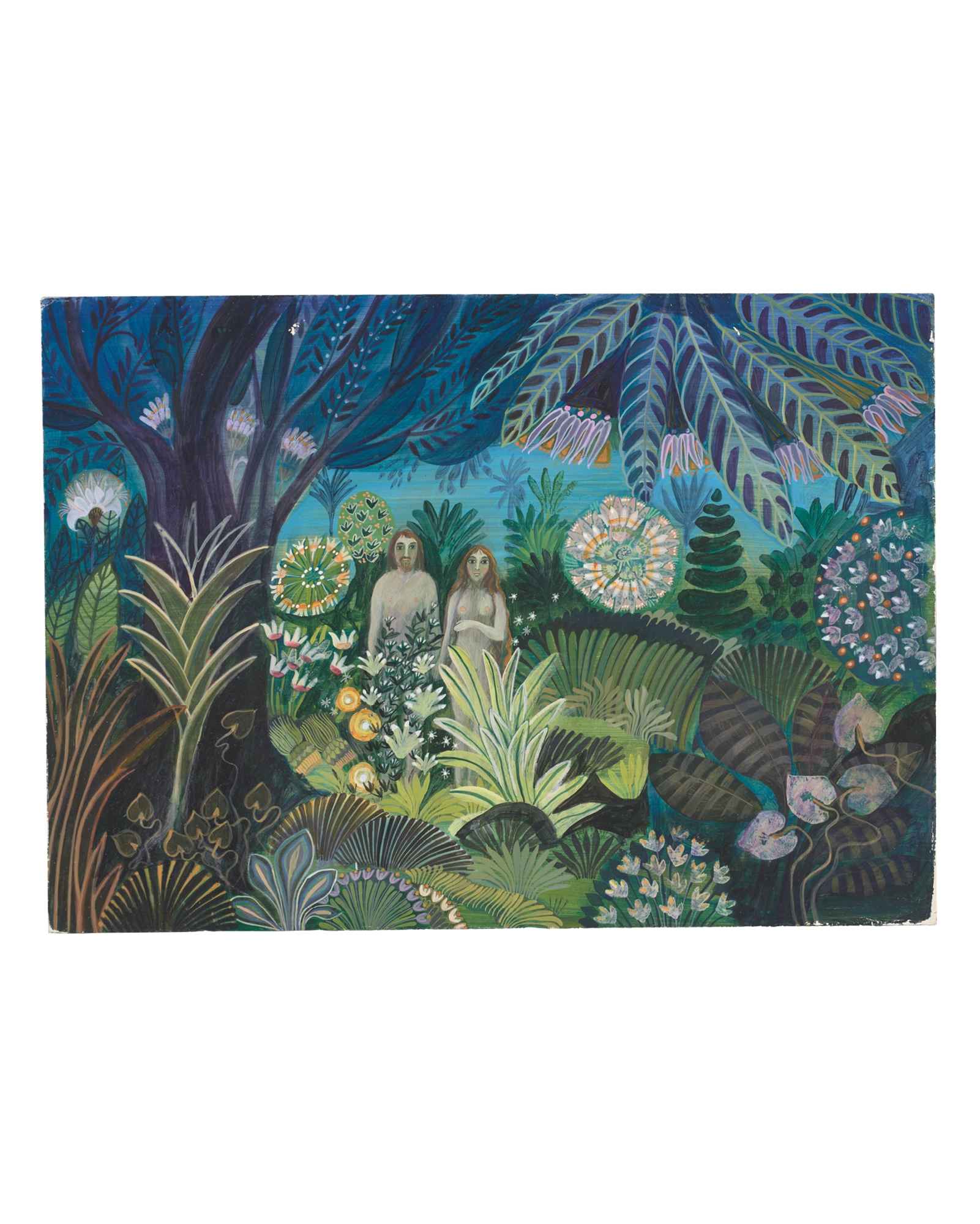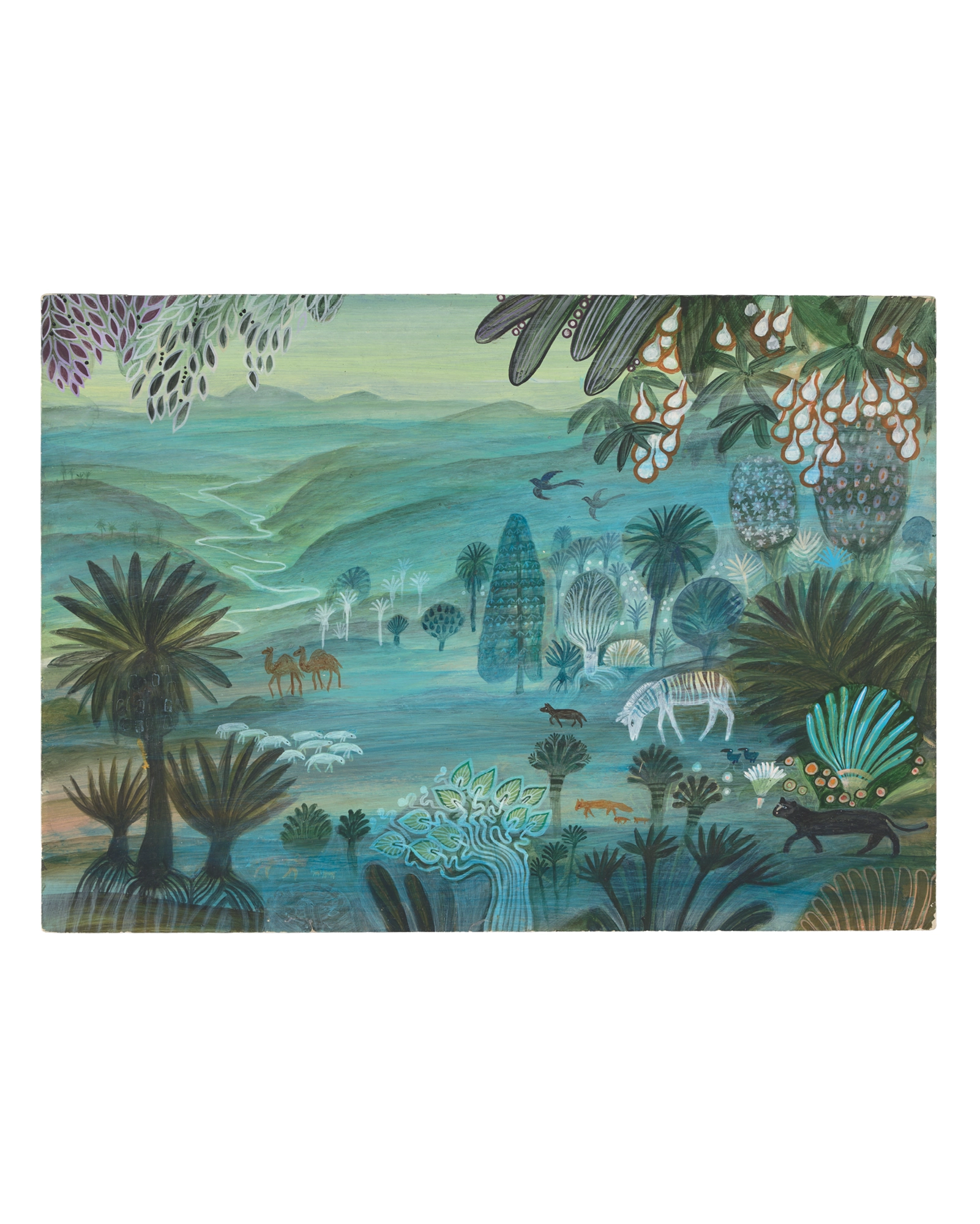In the first two chapters of Genesis, which Štěpán Zàvrel illustrates through these images, the garden becomes a mythical place of creation. In it, the spontaneity of biotic energy coexists with an ‘order’ that places beings next to one another. Zàvrel manages to convey both sensations. The lightness with which he depicts plants, skies, animals, and glimpses captures the imaginative bubbling of beings in constant transformation. At the same time, this multiplicity never creates disorder but always generates harmony. It is a symphony of forms constantly in balance.
However, the division of scenes that Zàvrel sets up in this diptych is striking. The animals frolic freely in an airy landscape that invites the eyes toward distant horizons. It seems like a gentle Italian landscape. A great calm dominates, and everything has its space. The human couple, on the other hand, is immersed in a dense plant structure where privilege and solitude cannot be distinguished. Their eyes gaze toward us, their equals, filled with an awareness they cannot share with the other living beings. The gift of consciousness lights their gaze and changes reality. For Adam and Eve (perhaps for the first time in art, Adam has a mustache and goatee), the garden resembles more of a forest—or even a jungle, like something from a Salgari page—a dense thicket more than a place of delights. This competition of greens and blues, vigorous and tonic, adds weight to a situation that, at the same time, both pleases and seduces. Are they happy or worried? The plants almost completely envelop them. Do they protect them or imprison them? The looks indeed seem to be in balance. The forest, with its shadows and labyrinths, already seems to be inside them. The human heart is more intricate than a forest.
The works you see displayed in the Museum are created with acrylic colors.



